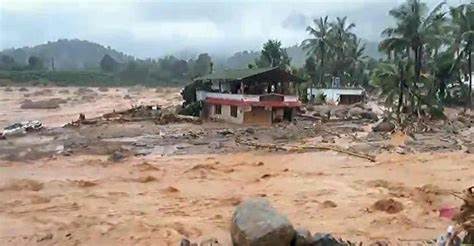In July 2024, the beautiful region of Wayanad faced a tragic landslide that left many in shock and sorrow. Known for its lush landscapes and rich biodiversity, Wayanad became the site of a disaster that reminded everyone of the power of nature. In this article, we will explore what happened during the Wayanad landslide in July 2024, its impact, and the ways to stay safe in such scenarios.
What Happened During the Wayanad Landslide?
The Wayanad landslide occurred after a series of heavy rains that flooded the area. The soil became unstable due to excessive moisture, triggering a massive landslide. Reports indicate that several houses were swept away, and roads became impassable.
Residents reported loud noises like thunder before the earth began to shift. Those unfortunate enough to be near the site felt the ground shaking beneath their feet. Moments later, chaos ensued as people rushed to safety amid falling debris.
How Did It Affect the Community?
The aftermath of the Wayanad landslide in July 2024 was devastating. Rescue operations were immediately launched to search for those missing and to provide help to those affected.
According to local authorities, over 500 people were displaced as homes were buried under tons of mud. Schools and local businesses also suffered damages.
“The community has shown strength and resilience,” said local leader Ramesh Kumar. Many residents came together to help their neighbors, offering food, shelter, and support.
The Role of Weather Patterns
Heavy rainfall is a significant factor for landslides, particularly in hilly areas like Wayanad. According to the India Meteorological Department, the region received more than 300% above normal rainfall during July 2024.
This deluge made the slopes unstable. As a result, environmental scientists warn that extreme weather fluctuations will continue to impact communities in vulnerable regions.
Safety Measures to Remember
While nature can be unpredictable, there are some precautions communities can take. Responsible practices can help mitigate the damage caused by landslides. Here are some safety tips:
- Stay Informed: Always monitor weather reports. Understanding local forecasts can alert you to potential rainfall and landslide risks.
- Create an Emergency Plan: Family members should know what to do in case of a natural disaster. Have a designated meeting place and understand emergency contacts.
- Proper Drainage: Ensure proper drainage around your home to reduce water buildup. Blocked drainage systems can worsen the effects of heavy rainfall.
- Stay Away from Hazardous Areas: Identify landslide-prone areas near your home. Avoid building or gathering near cliffs and steep hills.
- Regular Checks: Have an expert inspect the ground around your home if you live in a high-risk location. Small cracks or changes can signal potential landslide threats.
The Importance of Community Support
One heartwarming aspect of the Wayanad landslide July 2024 incident was the community’s response. Neighbors quickly formed support networks to help each other.
Volunteer groups from nearby towns joined in efforts to clean up debris and provide food to those affected. The kindness and teamwork demonstrated during this difficult time remind us that people can achieve great things when they come together.
Lessons for the Future
This event should serve as a reminder of how vulnerable our communities can be to natural disasters. Learning from the Wayanad landslide in July 2024, we need to advocate for better preparedness and awareness programs.
Government and local organizations must encourage regular drills and educational initiatives about landslide risks. Preparation is vital. The more people know about how to react, the better they can protect themselves.
Recovery Efforts and the Road Ahead
As rescue efforts started to ease, recovery and rebuilding began. This phase is incredibly important for restoring daily life in the community.
Local authorities are working hard to provide emergency housing and medical assistance. Efforts are also underway to rebuild infrastructure, including roads and telecommunications.
These steps signal hope for a community determined to rise again. Rebuilding lives will be a challenging process but, together, residents and government agencies can create a safer future.
Conclusion
The Wayanad landslide in July 2024 was a tragic reminder of the power and unpredictability of nature. However, it also showcased the resilience of the human spirit and the vital importance of community support in times of disaster.
As recovery efforts continue, it is crucial for the affected community to receive ongoing assistance and resources for rebuilding their lives. We can all learn from this disaster and focus on preparedness to better withstand future natural calamities. Let’s be proactive!



